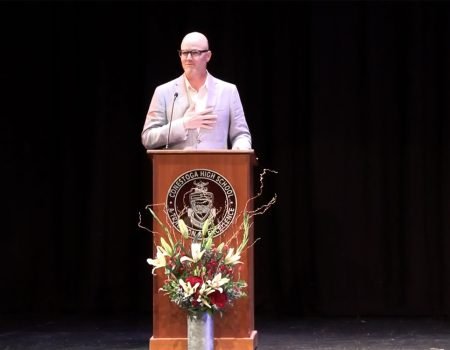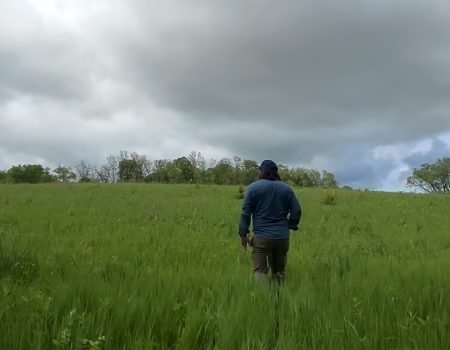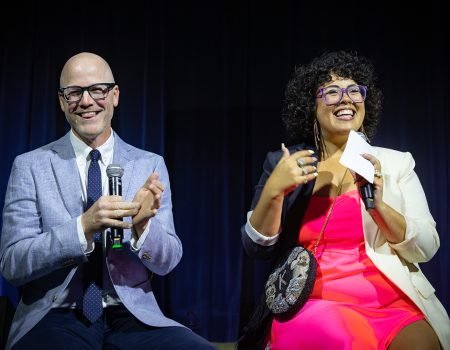Once In A Lifetime
January 25, 2021
When my pal, Rockwood Music Hall Talent Buyer, Matt Currie, asked if I’d like to perform one of their Facebook Lives, I jumped at the chance.
The date was more auspicious than I’d first thought, roughly coinciding with my first Rockwood shows in 2005. Which was also, far more importantly, the night I met my wife. So I decided to revisit those songs and somehow measure the time in-between.
It seems rare to be able to pinpoint an instant when the entire course of your life changed. Looking back now, there’s a straight line from that long winter — those songs, those worries, that work — to today. There, the fractures began to heal. There, the frenzy began to slow. There, we began to build our own home.
At the time, though, I was living at 80th & Columbus at the time, in a 6th-floor, walk-up duplex made for a bachelor. Downstairs was a dark box with high ceilings and shag carpet. Upstairs was a glass box flooded by sunshine and buffeted by winds straight off the Hudson.
I was ten years into New York City then. It felt like home. I was playing rock shows in Manhattan, and country shows in Brooklyn. I’d climbed a few rungs at MTV, and run a few marathons. Christofer and I were beginning to make “Mister Rogers & Me” (though had no idea how it would turn out).
I was approaching 35, unwed — but chronically monogamous. The prior year had seen a well (though fortunately not comprehensively) documented train wreck in which I’d blundered through numerous relationships with little regard for much more than how it felt to be liked.
A number of strong signals (The New York Times was one) told me that it wasn’t working. So I pledged myself a period of romantic asceticism. I swore off dating for six months. I dug into songwriting, recording and performing.
The Manhattan music scene was fairly hostile then. I was still cattle calling for bored sound guys, surly owners and a fist full of drink tickets. Ken Rockwood was planting the seeds of what has become a long, luminous legacy of artist and audience-first venues. Rockwood Music Hall came to feel like a clubhouse. Ken knew your name. He asked about your life. It was the only venue I frequented when I wasn’t playing.
And then, Mary Keller walked in and introduced herself. The rest is history. Living history.
Because sixteen-years-later, as David Byrne suggests, I find myself in a beautiful house, with a beautiful wife. Sixteen-years-later, I do the dishes, take out the trash, play board games. Sixteen-years-later, I find myself noticing the sunrise and sunset, bird watching.
It’s another world, one I could scarcely have imagined then. But I know exactly how I got here; the road is paved with songs.
The date was more auspicious than I’d first thought, roughly coinciding with my first Rockwood shows in 2005. Which was also, far more importantly, the night I met my wife. So I decided to revisit those songs and somehow measure the time in-between.
It seems rare to be able to pinpoint an instant when the entire course of your life changed. Looking back now, there’s a straight line from that long winter — those songs, those worries, that work — to today. There, the fractures began to heal. There, the frenzy began to slow. There, we began to build our own home.
At the time, though, I was living at 80th & Columbus at the time, in a 6th-floor, walk-up duplex made for a bachelor. Downstairs was a dark box with high ceilings and shag carpet. Upstairs was a glass box flooded by sunshine and buffeted by winds straight off the Hudson.
I was ten years into New York City then. It felt like home. I was playing rock shows in Manhattan, and country shows in Brooklyn. I’d climbed a few rungs at MTV, and run a few marathons. Christofer and I were beginning to make “Mister Rogers & Me” (though had no idea how it would turn out).
I was approaching 35, unwed — but chronically monogamous. The prior year had seen a well (though fortunately not comprehensively) documented train wreck in which I’d blundered through numerous relationships with little regard for much more than how it felt to be liked.
A number of strong signals (The New York Times was one) told me that it wasn’t working. So I pledged myself a period of romantic asceticism. I swore off dating for six months. I dug into songwriting, recording and performing.
The Manhattan music scene was fairly hostile then. I was still cattle calling for bored sound guys, surly owners and a fist full of drink tickets. Ken Rockwood was planting the seeds of what has become a long, luminous legacy of artist and audience-first venues. Rockwood Music Hall came to feel like a clubhouse. Ken knew your name. He asked about your life. It was the only venue I frequented when I wasn’t playing.
And then, Mary Keller walked in and introduced herself. The rest is history. Living history.
Because sixteen-years-later, as David Byrne suggests, I find myself in a beautiful house, with a beautiful wife. Sixteen-years-later, I do the dishes, take out the trash, play board games. Sixteen-years-later, I find myself noticing the sunrise and sunset, bird watching.
It’s another world, one I could scarcely have imagined then. But I know exactly how I got here; the road is paved with songs.



